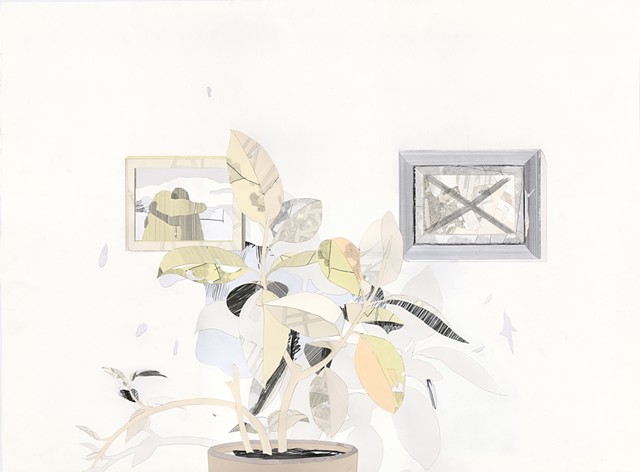Indianapolis, IN
The Studiolo of Frederico da Montefeltro, completed in 1482 for his palace in Urbino, was a place built for contemplation, not least of itself: the walls of the room were lined with elaborate wooden inlays depicting trompe l’oeil cupboards filled the objects of an idealized aristocratic life. It served as inspiration for the Duke, certainly, but also for many others since, including Fosbury Architecture, which created a more accessible version of the room out of printed cardboard for the Chicago Architecture Biennial last year. Mark Rospenda goes a couple of steps further, eschewing wood and cardboard for paper (it all comes from trees), in an intensive series begun in 2011 that one might call a portable Studiolo. Rospenda keeps the technique of inlay, using it to fashion meticulously integrated collages made from bits of older drawings, some with fragmented graphite marks, others blank, still others printed on the reverse with scraps of text. (The backsides are worth peeking at, revealing as they do the tidy frames of tape that hold it all together, belying the seamlessness of the front.) Rospenda’s ostensible subjects are a mantle clock, a living room potted plant and picture frames, a mirror, and so on, and certainly he has found a novel way of illustrating them, but the truly engrossing aspect of his project is not unlike that of the original Studiolo: the illusion of a scene that, when thoughtfully considered, opens up an entire world of past and present, the failed and the remade, the associative and the just what it is.
—Lori Waxman 2019-05-01 4:35 PM
